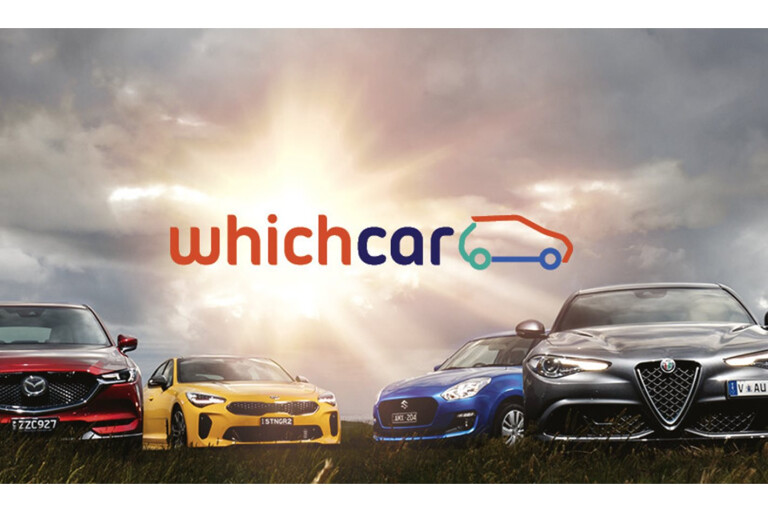
Happy Saturday Friends of WhichCar!
Ho! Ho! Ho! It’s the end of the year and hopefully you’re grabbing a few days off like we are before 2020 gets here.
What a year it’s been, although in some quarters not much has changed. Great Britain still can’t find the exit from Brexit, Donald Trump is still a clown, Australian new car sales are still falling, and Lewis Hamilton is still F1 World Champion – although I read yesterday he could leave Mercedes-Benz for Ferrari in 2021. If true, that’ll cost Maranello a fair bit more than his current GBP 40 million annual salary ($75million AUD).
No surprises I’m predicting Toyota will see out the year as Australia’s most popular new car brand for 16 years in a row when annual sales figures are released on January 6. But even that mighty Japanese juggernaut couldn’t buck the overall sales decline, falling 7.3 percent to the end of November in a market down 8.0 percent YoY.
Holden, in 2019, continued to set records for all the wrong reasons, its sales down another 28 percent on top of a 33 percent fall in 2018. In 2010, Holden was Australia’s top brand. In less than a decade the Lion has fallen to 10th and will fall further unless something dramatic happens.
In 2014 Holden’s then boss Gerry Dorizas told Australian media the Lion would take back the number-one spot by 2020. Well… based on the current rate of decline Holden will be 13th – below luxury brand Mercedes-Benz on passenger car and SUV sales.
Some say Holden took a brave first step to rebuilding its brand last week when it finally laid the Commodore badge to rest, two years after killing local production and moving Australia’s most respected nameplate to an import that shared none of the Aussie Commodore’s then-49-year history or DNA. I believe that’s just the first of many major challenges facing Holden. The biggest is how to get consumers interested in a largely uninspiring, uncompetitive SUV range. Another is how to re-energise a disillusioned dealer network trying to stay alive on less than a fifth the sales volume of the glory years in in the 1990s.
When it comes to the top ten brands, Holden and Toyota aren’t the only ones facing leaner times – one industry expert I spoke to predicted another 12-18 months of sales decline ahead.
You can be sure the car industry is under attack right now, on a number of fronts. Firstly, there’s the growing tide of electric cars headed our way as mainstream car companies scramble to catch up to Tesla. Despite what some pundits say, electric cars are not cheaper than IC cars to develop or to build. For proof look at the $12 billion Mercedes-Benz says it has invested in its new EQ range, headed by the EQC SUV which arrived in limited numbers this month. I bet you the real number is closer to $20 billion.
Right now, Mercedes-Benz cannot build enough of these cars to satisfy global demand. Australia’s initial supply was so small that the Australian arm had to invent a new retail program to guard against potential customer dissatisfaction, but more on that in a sec.
This lack of volume could be because Merc underestimated demand, but that’s not likely. I think it’s because there’s a huge learning curve associated with building electric cars, and because component manufacturers do not have sufficient volume to feed big players like Mercedes… yet. Hence Merc’s tough decision to delay the EQC’s entry into the important and lucrative US market until 2021.
Component manufacturers will come under added pressure when Volkswagen’s exciting ID family of electric cars (starting with a hatch and a small SUV) hits mass production Q1 2020.
As for Volkswagen’s ambitious boast that it will build 15 million ID electric models by 2028… Don’t bet on it.
On another front, the rise and rise of ride hailing continues, with Uber, Ola, Didi and others proving that you don’t have to own a car to be mobile at a moment’s notice. Many people underestimated the true impact these companies would have on new car sales and car ownership. Not anymore. Uber may still be struggling for profitability, but ride hailing is here to stay.
Then there’s autonomy. Thankfully for this car enthusiast, this particular threat actually seemed to weaken in 2019 as more and more car companies pushed back the highest level-5 fully-autonomous horizon by years, decades even.
Lastly, what about the humble dealer? I foresee the retail revolution picking up pace considerably in 2020. On the one hand Subaru and Tesla are well down the road with shopping-centre stores, and others will follow. On the other hand, Mercedes-Benz launched a new retail plan with the EQC electric SUV circumventing the dealer and selling cars direct to the customer.
Speaking at the launch earlier this month, Mercedes-Benz’s Network Development Director Jason Nomikos told me this program could be rolled out across other small volume, high-demand models… and also on high volume models in the future. Dealers won’t be happy, losing all that sales volume… They will still get a fee for facilitating the customer handover under the MB model, but it’s a lot less than the margin they would have made selling the car.
Meanwhile up in Brisbane, Mercedes-Benz of Brisbane opened a new $100-million-plus dealership in Breakfast Creek that definitely bucks the trend of dealership downsizing. This five-story behemoth will be more than just a car retail and servicing space, if its owner LSH Auto’s vision is realised. It will be a destination with a high-class restaurant and riverside cafe, rooftop cocktail bar, wellness centre, co-working offices and more.
With all this uncertainty and change, there’s one thing I’m absolutely 100 percent, rock solid, put yer house on it certain of: I am really looking forward to 2020!
Until then, thanks for your support in 2019, have a fantastic holiday season, and we’ll see you next year!
COMMENTS